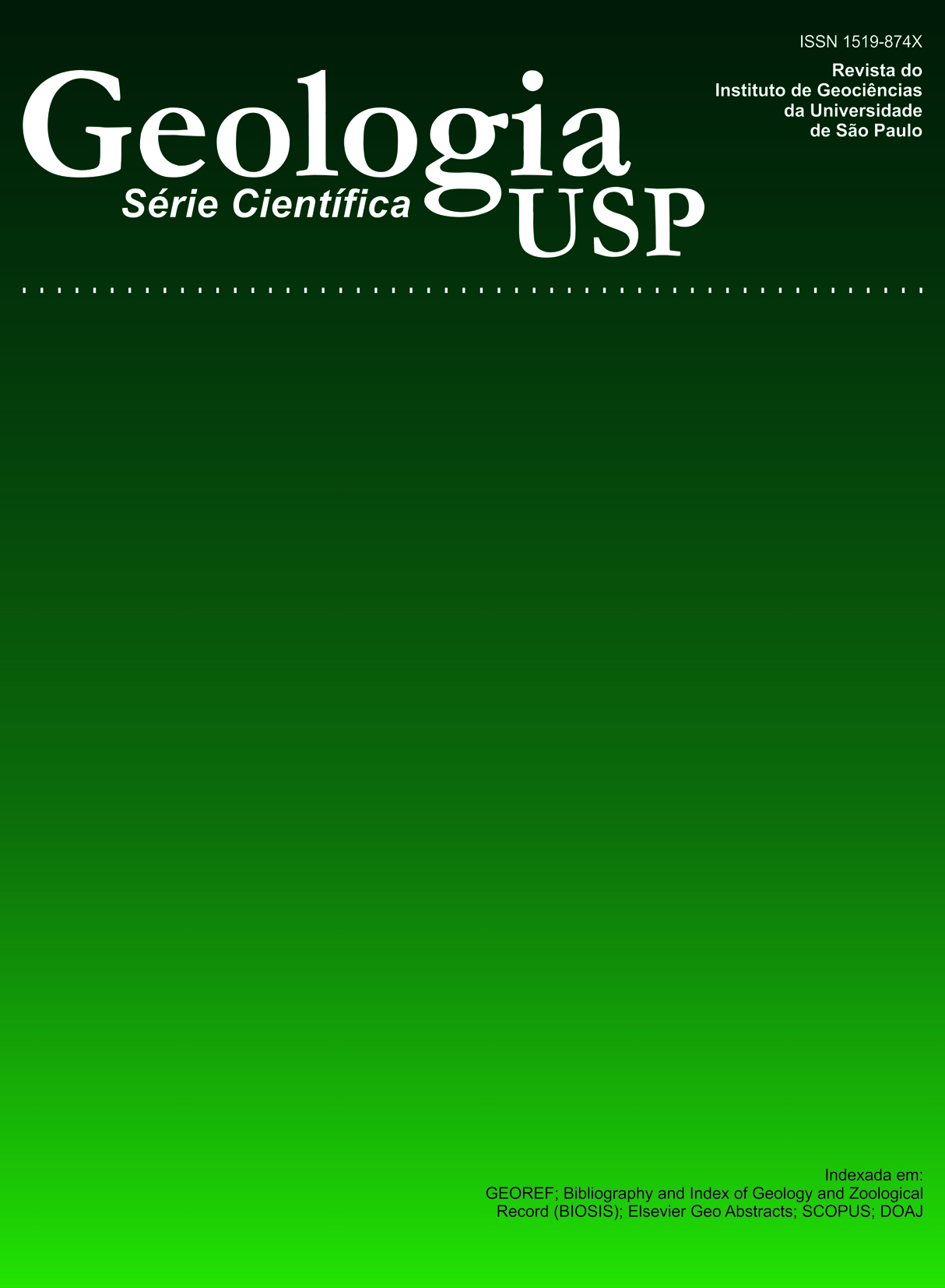Water-Rock Interaction and the Hydrogeochemistry of Chromium in Groundwater from Multilevels Monitoring Wells in Urania, SP, Brazil
DOI:
https://doi.org/10.5327/Z1519-874x2009000200003Keywords:
Chromium, Hydrogeochemistry, Groundwater, AquiferAbstract
Anomalous natural concentrations of chromium, sometimes exceeding the potability limit (0.05 mg.L-1), have been detected in the groundwater of Adamantina Aquifer in the municipality of Urânia, and in a wide region of the western part of the State of São Paulo. In order to identify the possible geochemical reactions that may explain the occurrence of chromium in groundwater, chemical and mineralogical analyses were conducted in rock samples collected from deep boreholes drilled in the city of Urânia. Multilevel monitoring wells were installed in the boreholes, and stratified groundwater samples were collected for chemical analyses. The analyses of the borehole samples indicated the occurrence of a geochemical anomaly of chromium (average concentrations of 221 ppm) and pointed to chrome-diopside containing from 1,000 to 6,000 ppm Cr as the main reactive mineral that contributes to this anomaly. Groundwater chemical analyses indicated the occurrence of a hydrochemical stratification of the aquifer: waters from the base of the aquifer are alkaline (pH higher than 10) whereas in the shallow zone of the aquifer, pH is neutral to mildly acid. Chromium has been identified in its hexavalent form, and prevails in the aquifer, reaching the maximum concentration of 0.13 mg.L-1. The geochemical reactions that explain the release of chromium from the solid phase to the water probably involve the dissolution of Cr3+ minerals such as diopside, followed by a redox reaction that oxidizes Cr3+ to Cr6+ and reduces manganese oxide minerals. Additionally, adsorption reactions may take place, and desorption and mobilization of Cr6+ may be favored in some portions of the deep aquifer where pH is anomalously alkalineDownloads
Download data is not yet available.
Downloads
Published
2009-06-01
Issue
Section
Articles
License
Authors who publish in this journal shall comply with the following terms:
- Authors keep their copyright and grant to Geologia USP: Série Científica the right of first publication, with the paper under the Creative Commons BY-NC-SA license (summary of the license: https://creativecommons.org/licenses/by-nc-sa/4.0 | full text of the license: https://creativecommons.org/licenses/by-nc-sa/4.0/legalcode) that allows the non-commercial sharing of the paper and granting the proper copyrights of the first publication in this journal.
- Authors are authorized to take additional contracts separately, for non-exclusive distribution of the version of the paper published in this journal (publish in institutional repository or as a book chapter), granting the proper copyrights of first publication in this journal.
- Authors are allowed and encouraged to publish and distribute their paper online (in institutional repositories or their personal page) at any point before or during the editorial process, since this can generate productive changes as well as increase the impact and citation of the published paper (See The effect of Open Access and downloads on citation impact).
How to Cite
Bertolo, R. A., Marcolan, L. N. O., & Bourotte, C. L. M. (2009). Water-Rock Interaction and the Hydrogeochemistry of Chromium in Groundwater from Multilevels Monitoring Wells in Urania, SP, Brazil . Geologia USP. Série Científica, 9(2), 47-62. https://doi.org/10.5327/Z1519-874x2009000200003





